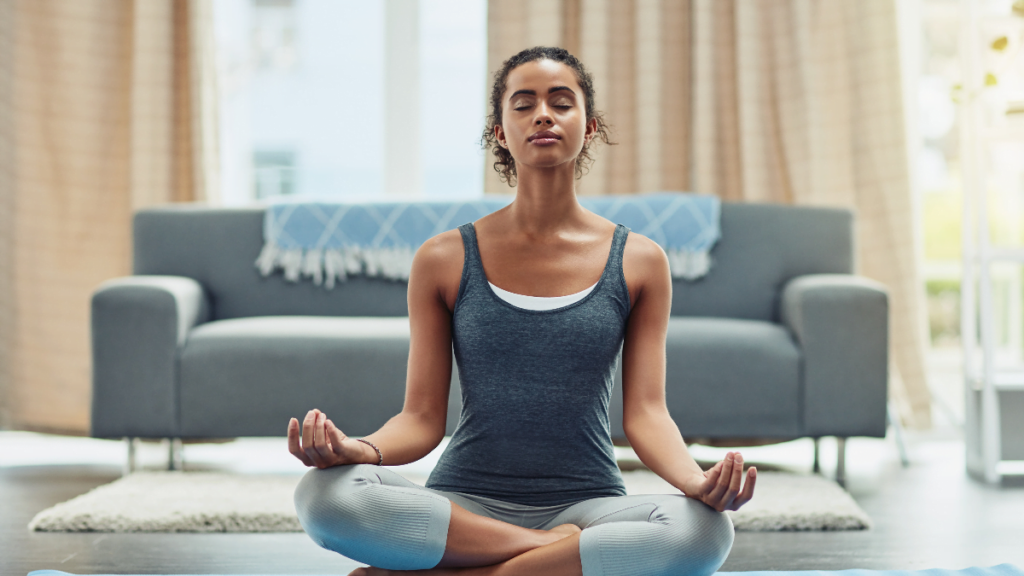How to Meditate ─ 10 Tips to Calm Your Mind

Society keeps moving fast; it is a struggle to keep up. Sometimes, it is easy to get carried away with the running around that comes with smashing your goals, other times, the weight of the things you have to do in a day keeps you in bed a few hours more. With these activities, it is inevitable that your mind may start to run on its own accord.
Having control over your mind is the best achievement you can get because your mental health has a lot to do with the results you produce. You can determine your pace and feel more like yourself through meditation.
Meditation is a useful exercise for maintaining mental health because it brings peace of mind and clarity. It can be used to build the mental strength to overcome grief, reduce stress, or manage anger. It is also a good way to prepare yourself for the day’s pressure.
However, meditation is not an easy practice so without proper guidance, it can be difficult and unyielding. If this is your category, here are tips to help you calm your mind:
1. Prepare a suitable environment
Meditation is not an activity that you can do at any place under any condition. You should be sure that you will be free from every distraction possible throughout the period. So, make sure you switch off your phone or put it on airplane mode to avoid receiving phone calls and/or SMS that can interrupt your quiet session.
Also, your meditation area should be a serene environment where you can have the time you need for yourself. You don’t want background discussions to interrupt you hence, it is best to use a place with less or no people at all. Some may advise you to go to the extent of staying in your cupboard but I’d suggest any place is okay provided you’ve dealt with distractions and you feel comfortable using that place at any time.
2. Create a meditation routine

Source: chiropractic.ca
Choose a suitable time of the day that you can be consistent. It may be advisable to pick mornings or evenings because of the quiet atmosphere and the cool weather. To help with consistency, you can attach an activity with the practice so you know that before you have your bath, for instance, you should do your meditation.
Although consistency is key, try not to beat yourself up for any day you miss. Keep trying till you find the time that works well for you.
3. Settle in
Get a chair that you can comfortably sit on with your body upright. You can as well sit on a meditation cushion or pillow but avoid resting on an object or lying down so that you don’t sleep. Do not stand or walk about because your mind needs to be relaxed yet alert. If you move your body, your mind will tend to move along with it. Thus, you should sit still for your mind to be still.
4. Take deep conscious breaths
After you’ve settled in and you feel comfortable, focus on your breathing and create a rhythm to it. You can audibly breathe in through your nose and out through your mouth a few times. This action will put your mind at ease and make you feel relaxed. Once you have steadied your breathing, close your eyes slightly or stare absentmindedly at a spot. It is best to keep your eyes closed to manage distraction.
5. Peep at your thoughts

Source: blog.alomoves.com
Check the thoughts that pop up in your mind one after the other. Don’t try to stop or control them otherwise, you would lose focus and intensify them. Rather, be a spectator to your thoughts and make opinions about them but do not judge. If you find any thoughts difficult to manage, express them in writing or speak about them to a trusted person. Examining your thoughts can make you understand why you act in some ways at times so you can know how to control your negative responses.
6. Attend to your body’s reactions
Notice what part of your body feels stiff or tense and which is relaxed. Observe the feel of the chair or cushion against your body. Also, feel the curve of your elbow and knee, and the condition of every other part of your body. Do not make any active corrections, just observe and breathe through the tensioned areas till you feel them relax.
7. Avoid meditation after meals
You want to be in a relaxed but alert state of mind so feeling heavy is not what you need. Since you’re aiming for a calm mind, there is a higher tendency to fall asleep when you feel heavy. It is best to have your meditations before meals or at least two hours after a meal. You may find it difficult to concentrate when you are hungry likewise when you’re filled.
8. Practice with a group of people

Source: artofliving.org
If you are struggling to keep your mind calm by yourself, try meditating with a group of people. They will provide some form of encouragement for you to have a deeper experience through the collective energy.
9. Slowly disengage
When your meditation is over, don’t get up and continue with your daily activities like nothing happened. Take some time to relive the moment still with your eyes closed. You can decide what next you want to do or what you want to achieve on that day. Then, slowly open your eyes, conscious and grateful for the stillness. You can go through your day with confidence that you have your mind under control.
10. Be gentle with yourself
Don’t be too hard on yourself by pushing for perfection. If you feel you are not getting it right, don’t give up. Keep practicing these tips and incorporating the actions while meditating. If you were able to relax for 5 minutes instead of 10, celebrate yourself and be prepared to go again the following day. Mind you, the results of meditation are gradual rather than immediate. You will observe as you continue that you’re calmer than you used to be.
